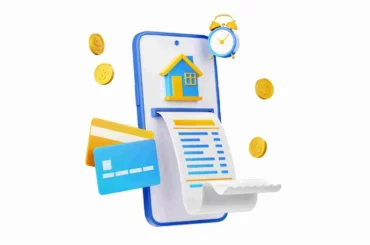Table of Contents
NEFT Transaction Charges and Fees
As of July 1, 2019, the RBI eliminated processing charges on online NEFT transactions, making digital transfers via internet and mobile banking free of cost. These services are available 24/7, 365 days a year, including weekends and holidays.
From January 1, 2020, banks have also been directed not to charge savings account holders for NEFT transactions made online.
There are no fees for inward NEFT transactions—when money is credited to your account, the receiving bank doesn’t charge anything.
However, if you initiate a transfer at a bank branch, fees are applied based on the amount being transferred. Here’s a quick look:
Transaction Amount |
Service Charge Levied |
|
Up to Rs. 10,000 |
Rs. 2.50 + GST |
|
Between Rs. 10,000 and Rs. 1,00,000 |
Rs. 5 + GST |
|
Between Rs. 1,00,000 and Rs. 2,00,000 |
Rs. 15 + GST |
|
Over Rs. 2,00,000 |
Rs. 25 + GST |
NEFT Charges & Fees of Indian Banks in 2025
NEFT fees and charges can vary from one bank to another. Below is a table summarising the charges for some of the major banks in India for 2025.
Bank Name |
Minimum NEFT Transaction Charges |
Maximum NEFT Transaction Charges |
|
State Bank of India (SBI) |
Rs. 2 + GST |
Rs. 25 + GST |
|
HDFC Bank |
Rs. 2 + Applicable GST |
Rs. 10 + Applicable GST |
|
ICICI Bank |
Rs. 2.25 + Applicable GST |
Rs. 24.75 + Applicable GST |
|
Punjab National Bank (PNB) |
Rs. 2 + GST |
Rs. 20 + GST |
|
Axis Bank |
Nil |
Nil |
Please note that the above charges are indicative and can change over time. Check with your bank for the most accurate and up-to-date information regarding payment gateway charges.
Related Read: Indian Bank NEFT Charges Explained
Related Read: Bank of Baroda NEFT Charges, Benefits, and How to Transfer Money
How to Carry Out a NEFT Transaction?
To initiate and successfully conduct a NEFT transaction, follow these steps –
- Step 1: Fill out an application form that provides all the details about the beneficiary. These details include the name of the beneficiary and the bank they operate with, as well as the IFSC, account number and account type.
- Step 2: Enter the amount that you want to transfer to the beneficiary.
- Step 3: You may have to verify your identity by entering a PIN / OTP, or by following any other verification means as specified by your bank.
Once these steps are completed, the bank authorises the payment.
How to Transfer Funds Through NEFT Online
- Log into your online banking portal: Use your login credentials to access your bank’s online banking platform.
- Select the NEFT option: Navigate to the ‘Fund Transfer’ or ‘Payment’ section, where you will find the NEFT option.
- Add beneficiary details: Enter the beneficiary’s name, account number, bank name and IFSC. Double-check the information for accuracy.
- Enter transaction amount: Specify the amount you want to transfer.
- Confirm and authenticate: Review all the transaction details and authenticate the transfer using the method provided by your bank, typically an OTP. You will receive a confirmation once the transaction is processed.
How to Transfer Funds Through NEFT Offline
If you prefer to initiate an NEFT transfer offline or in-person at your bank branch, follow these steps:
- Visit Your bank branch: Go to your bank’s nearest branch and request an NEFT form.
- Fill out the NEFT application: Complete the NEFT form with the beneficiary’s name, account number, bank name, IFSC and transaction amount.
- Submit the form: Hand over the filled-out NEFT application form to the bank representative.
- Pay the required charges: Pay the applicable NEFT charges for the transaction, if any.
- Collect transaction receipt: After processing, you will receive a transaction receipt as proof of the NEFT transfer charges.
What Happens When the Bank Authorizes a NEFT Payment?
NEFT payments occur in hourly batches. Thus, depending on how the bank operates, your beneficiary may receive the payment within a set number of hours. The following process takes place when the bank authorises an NEFT payment:
- Your bank branch will prepare a standard message regarding the transaction details. They will send this message to a pooling centre. Pooling centres are also known as NEFT service centres.
- The pooling centre will forward the message to the NEFT Clearing Centre. This centre is operated and maintained by the Reserve Bank of India (RBI) through the National Clearing Cell located in Mumbai. The message ensures that the payment is included in the upcoming batch (since NEFT timings are 1 hour).
- The Clearing Centre then starts to sort through all the different requests for payments. These payments are initially sorted bank-wise. The centre then creates accounting entries that specify the amount of money that needs to come from the originating bank.
- For instance, if you have initiated a payment of Rs. 2 lakh, the centre will create an accounting entry stating that your bank must pay Rs. 2 lakh. The remittance messages are then sent to the destination banks through the pooling centres.
- Once the destination bank receives the information, it forwards the message to the beneficiary’s account.
The transfer takes place once all of these steps are completed.
Related Read: What are Payment Banks? Features & List of Payments Banks
Who Can Use NEFT to Transfer Funds?
Any individual, corporation or business entity with a bank account can utilise NEFT services. For individuals without a bank account, the option to deposit funds is available at any NEFT-enabled ATM nearby. In such cases, individual customers are provided with a unique NEFT code.
Similarly, any individual, corporation or firm can receive payments initiated through NEFT. This payment scheme is commonly used to transfer money between India and Nepal. It even converts the amount sent from Indian Rupees into Nepalese Rupees for convenience.
However, in recent times, many customers and corporate entities have shifted towards using UPI and IMPS-enabled platforms for fund transfers. This preference is primarily owing to the higher speeds and the array of business-centric features these platforms offer, enhancing overall efficiency.
Related Read: What is the IMPS Transfer Limit Per Day?
What are the Charges for NEFT Transactions?
NEFT transactions are a convenient way to transfer funds electronically. The RBI does not impose charges for NEFT transactions, however, individual banks may set their own fees within limits established by the RBI. This service is available across India and can be used for various transactions like paying credit card bills or loan EMIs. Typically, there are no charges for online NEFT transactions made from savings bank accounts.
What Else Can You Do With NEFT?
Another feature of NEFT that has been quite helpful to customers is that you can pay any credit card dues through this payment system, if required. The NEFT system has a different transaction code built into it to enable payments to the card issuing banks. You will need this code, along with the IFSC code of the bank, in order to make these payments. You can get the code from your bank branch.
Related Read: What is TPT Transfer in Banking? – Methods, Limit & Fees
Possibility of NEFT Fund Transfer Failures
While NEFT is generally a reliable method for fund transfers, certain factors and scenarios can lead to transaction failures. Some of them are as follows –
1. Incorrect beneficiary details:
Providing incorrect beneficiary account details, such as the account number or IFSC, can result in a failed transaction.
2. Insufficient funds:
If your account does not have enough funds to cover the transfer amount, the NEFT will fail.
3. Technical glitches:
Temporary technical issues or system downtime at the bank or RBI can lead to transaction failures.
4. Transaction limits:
Some banks impose daily transaction limits; exceeding these limits can result in a failed NEFT.
It is crucial to double-check the beneficiary details, ensure sufficient funds, and be aware of transaction limits to minimise the risk of failure.
What Else Can You Do With NEFT?
A beneficial aspect of NEFT is its ability to facilitate credit card bill payments. The NEFT system includes a distinct transaction code to facilitate payments to credit card issuing banks. To make such payments, you will require this unique code in addition to the IFSC of the bank. You can obtain this specific code from your bank branch.
NEFT Payments Round The Clock
From December 2019 onwards, you can make NEFT payments all through the day and night, instead of the earlier window of 8 am to 7 pm.
Advantages of Using NEFT
- Speed and efficiency: NEFTs are processed quickly, allowing for prompt fund transfers.
- Cost-effectiveness: Many banks offer NEFT services free of charge or at a low cost, making it an economical choice.
- Accessibility: NEFT can be initiated through online banking, mobile apps, or by visiting a bank branch, thus providing convenience and flexibility.
- Security measures: NEFTs are protected by encryption and authentication measures.
- Wide coverage of banks and branches: NEFT is accepted by most banks and their branches, ensuring extensive coverage nationwide.
Related Read: How to Check NEFT Transaction Status Using Reference Number?
Conclusion
One of the biggest plus points of NEFT is that there are no upper limits on the transactions, allowing customers to send money as required. This can be a huge boon for customers facing any medical or financial emergency and needing large sums of money to deal with the same.
Related Read: What Are RTGS Charges? – Check RTGS Transfer Charges in 2024
Frequently Asked Questions (FAQs)
1. Is NEFT chargeable in SBI?
NEFT charges at SBI may vary; they typically depend on the transaction amount and other factors. It is advisable to check with SBI for the most accurate and up-to-date information on NEFT charges.
2. Is NEFT tax-free?
NEFT is not subject to tax. However, any income from the funds transferred through NEFT, such as interest or investment gains, may be subject to taxation.
3. Is NEFT free for mobile banking?
NEFT through mobile banking may be free or subject to nominal charges, depending on your bank. Check with your bank for their specific policies on NEFT charges for mobile banking.
4. Is NEFT transaction safe?
Yes, NEFT transactions are generally secure. Banks and the RBI have implemented safety measures and encryption protocols to protect the integrity of NEFT transfers.
5. What are the disadvantages of NEFT transfer?
While NEFT is a popular and reliable method for fund transfers, it may have some disadvantages, including potential transaction failures due to incorrect details, and fees for certain transactions. However, these limitations can vary based on your bank.



